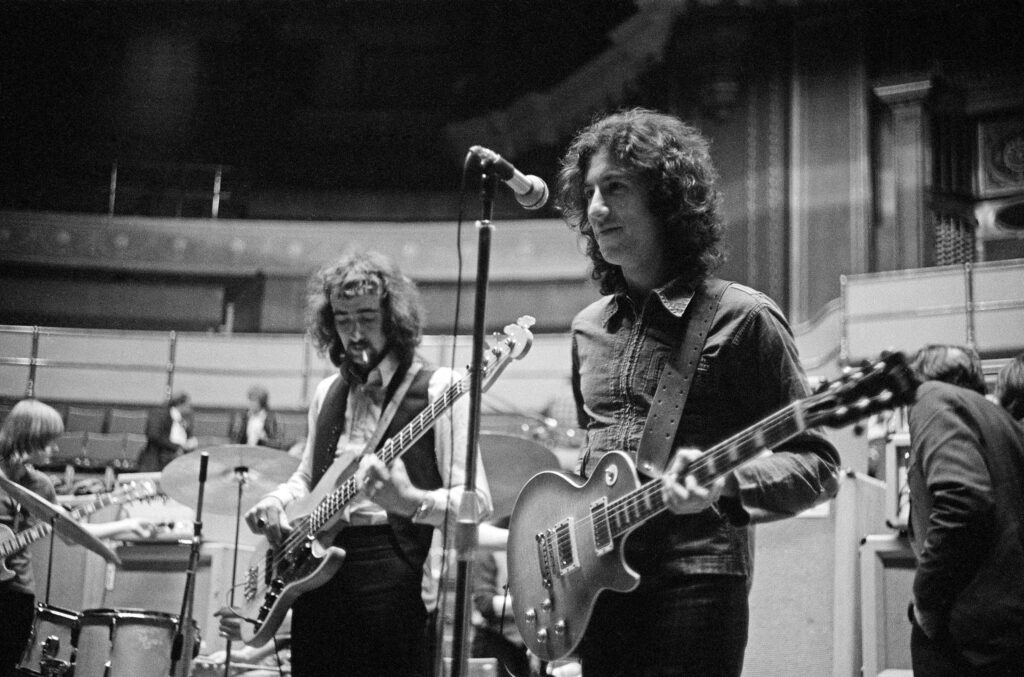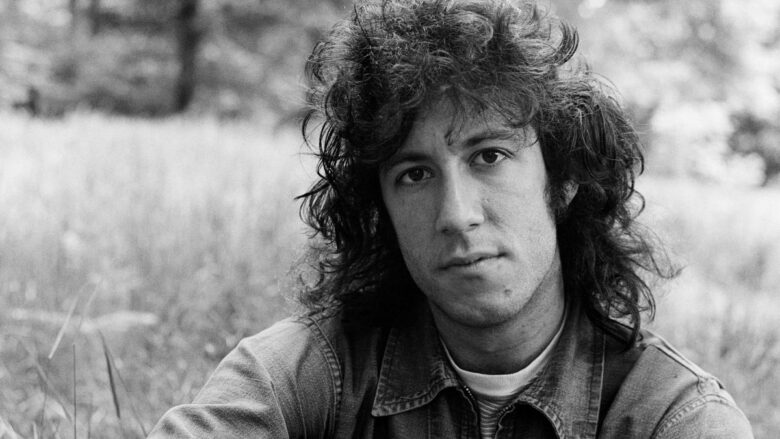I have written earlier of my musical autobiography charted by the technology that delivered my music. For those who missed, forgot, or ignored it, about age 12 I began listening to FM radio. In 1967 the FCC mandated that an FM broadcast could not be the simulcast of an AM broadcast, taking an FM slot away from a station who would add more diversity for listeners to choose from. So in the early 70s new, free-form radio stations were popping up across the US, logical commercial outgrowths of underground and college radio that emerged in the mid to late 60s. That wave took a bit longer to hit my shores in the Allegheny Mountains, arriving in the early 70s.
By 1974 I had a stereo connected to an FM cable, giving me stable signals and pristine sound from places an antenna would never reach—or reach so well. A favorite Buffalo radio station, WGRQ was moving from the Top 40 “Super Q” format to a more free-form, AOR format. My next oldest brother was 9 years my senior and was in college by this time. Between his sharing the fruits of his collegiate music discovery with me, and the steady flow of “new” music from the 60s and 70s I was being exposed to, I began to inhabit a whole new musical universe. I was introduced to contemporary artists like Brian Protheroe, Genesis, and Supertramp. I also discovered the world of 1960s classic rock. Traffic, Cream, and Fleetwood Mac to name a few.
Fleetwood Mac was the band from that era that was still making records. Mystery to Me and Heroes are Hard to Find were contemporary to that period and had pretty heavy rotation on WGRQ. But what always caught my attention were songs from the earliest incarnation of that band led by Peter Green. Of all the great songs that came from that iteration of Fleetwood Mac, “Oh Well” (Part 1 & Part 2) was their opus that got the most airplay. I always liked Fleetwood Mac, but never bought their music, though I was given Then Play On in college, the LP which included “Oh Well.”
Fast forward four decades, and I find myself in High Fidelity Records in the Los Feliz neighborhood of Los Angeles, where I saw for what I believe is the first time, Fleetwood Mac’s Greatest Hits (1971). It caught my attention enough to do some on-line research on that record and decided to grab it the next time I was in Los Feliz. But when that next time came that record was gone.
So scouring through the listings on GEMM I found someone who was selling a record library in London. I picked up both that record and Heavy Cream by Cream, an import record I have wanted since High School. I boiled them both down to a side of a cassette and had 90 minutes of English Sixties Blues Rock by the two subsequent guitarists of John Mayall’s Bluesbreakers and their subsequent bands, Clapton and Cream followed by Green and Fleetwood Mac. I loved cruising around LA in the summer listening to that tape. (Yes, I have a cassette player in my auto’s audible arsenal.) I enjoyed the Cream side very much, but really became enamored by the Fleetwood Mac side whose material was less familiar. There was something about the sound of Green’s guitar—and even his voice—that really grew on me. Then I learned that the great Danish record company, Music on Vinyl, had released a new audiophile pressing of Greatest Hits. So adding that LP to my library, I re-recorded the Fleetwood Mac side of the tape, and added a song from Then Played On, “Before the Beginning,” which closes out the record. Although the tape is still a summertime favorite, the Fleetwood Mac side is a bit less sunny than the Cream side, as you will see.
Every now and again, something, like the death of Danny Kirwan, inspires me to search the web for more background on the Peter Green era Fleetwood Mac. I learned that his unique guitar tone came from merging traditional blues techniques with a sort of “shimmering” processing of the sound, following the approach of The Shadow’s guitarist, Hank Marvin, whose out-of-phase pickups and reverb tone he emulated. B.B. King said of Green’s playing, “He has the sweetest tone I ever heard; he was the only one who gave me the cold sweats.” The instrumental “Albatross” demonstrates a Green’s deftness and touch on guitar, creating the ethereal feel to that song, that sets it and Green a part. The song inspired Green’s peers to try to imitate that sound and feel, including The Beatles, Pink Floyd, and Santana (whose cover of Green’s “Black Magic Woman” became a breakout hit for them. 1971. The year after Green left the band, Fleetwood Mac was the biggest selling singles band in England, the first band to hold that title after the Beatles. Some of those singles were Green’s last songs with the band. He would have been on Super Q radio and AOR in England back then.
I also learned of his troubled personal life. His discomfort with the wealth he was acquiring and giving it all to charity when he left the band, his emotional instability that was later diagnosed as schizophrenia, and his diet of drugs and alcohol that was so much a part of the music scene then. Even though Green was at most in Fleetwood Mac for three years, he was never forgotten. When Jeremy Spencer left the band while in California in the early 70s to join a conservative Christian community, Green filled in under the name of “Peter Blue.” He guested on the band’s later LPs, the last being Tusk.
On February 25 of this year, Mick Fleetwood organized an all-star tribute to Peter Green and his edition of Fleetwood Mac. Viewing the show one can see how many of rock’s luminaries paid him homage. On July 25th Peter Green died. Though he played beyond 1970, to most people that is a footnote on his early years in the Bluebreakers and Fleetwood Mac. And his life, even at the height of his powers, was troubled. One of the last songs he recorded with Fleetwood Mac was the proto-Heavy Metal (later covered by Judas Priest in 1978) “Green Manalishi (with the two-pronged crown).” It was based on Green’s vision of the devil coming as money to hound him. It was the last song he recorded with Fleetwood Mac, he then left the band and gave away his money to the poor.
A tremendously talented, and deeply troubled person, was Peter Green. I will not romanticize the vision of a tortured artist whose suffering is redeemed by their works. Peter Green’s was, by any estimation, a painful life. Yet that he did bring so many such joy, and inspired so many great musicians, from his contemporaries to musicians today, is a gift that cannot be denied; even if he is just a blip on most people’s musical radars today. In the end, when I listen deeply to his music, I am haunted by the obvious pain preserved for all to hear. There is a raw pain interwoven with sweet tunes and tones in those early songs. This is particularly evident in his hit “Man of the World.” I leave you with those lyrics.
Shall I tell you about my life
They say I’m a man of the world
I’ve flown across every tide
And I’ve seen lots of pretty girls
I guess I’ve got everything I need
I wouldn’t ask for more
And there’s no one I’d rather be
But I just wish that I’d never been born
And I need a good woman
To make me feel like a good man should
I don’t say I’m a good man
Oh, but I would be if I could
I could tell you about my life
And keep you amused I’m sure
About all the times I’ve cried
And how I don’t want to be sad anymore
And how I wish I was in love
May you now rest in the peace that alluded you, Peter Green.
Todd E. Johnson




